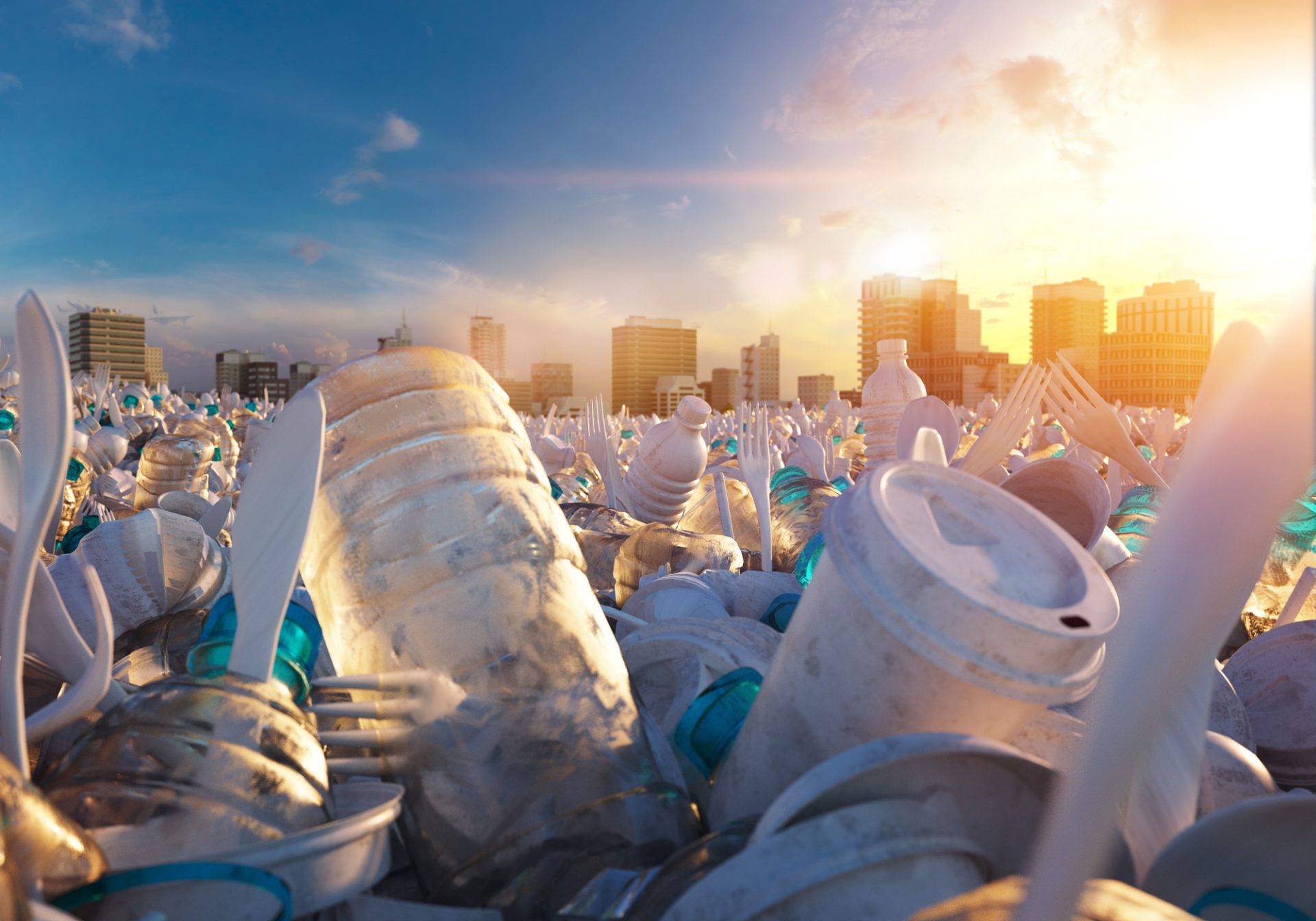A bio-based solution to quickly eliminate single-use plastics altogether
A concerted effort to speed up development of bio-based packaging materials could soon make single-use plastics a thing of the past.
Synthetic materials remain major contributors to global pollution despite increasing recycling rates. Non-biodegradable plastics, such as single-use plastics, release harmful endocrine disruptors and tiny particles that accumulate in the environment, pushing pollution to near-critical levels. Alternative bio-based compounds produced from renewable and green sources such as food waste can provide a sustainable alternative, and would seamlessly integrate into the biosphere minimising the effect of common plastic pollutants. Their industrial implementation has stalled.
An international team led by researchers at Khalifa University has proposed guidelines that could help accelerate the development of bio-based materials into scalable packaging materials and eliminate single-use plastics typically used for food packaging.
Using more bio-based building blocks can increase the profitability of growing biomass and promote a greener world.
Blaise Tardy, Research and Innovation Center on CO2 and Hydrogen, Khalifa University
“Using more bio-based building blocks can increase the profitability of growing biomass and promote a greener world,” says chemical engineer and lead author Blaise Tardy, from KU’s Research and Innovation Center on CO2 and Hydrogen.
Tardy and collaborators suggest that the slow technology transfer between industry and academia results from a disconnect between publicly funded research and research funded by industry. They noticed that team leads from industry did not read the scientific literature but relied on unpublished internal findings. Conversely, most scientific publications involved only academics, and their real-world impact waned over the years.
To remedy this disconnect, the researchers have suggested that scientists follow specific targets when it comes to isolating and transforming bio-based building blocks into scalable packaging materials, set through discussions with companies, and government support. Scientists should also adopt a more modern approach to industry interactions, such as open innovation schemes; as current translation schemes are neither benefiting universities nor society.
“The way Khalifa University interacts with industry is in this direction,” Tardy says.
Now the KU team is studying ultrasmall natural fibres obtained by breaking down cellulose, the Earth’s most abundant biopolymer. In addition to being biodegradable, these nanofibers, or fibrillated cellulose, present interesting mechanical, optical, and thermal properties, making them attractive for numerous applications, including food packaging.
According to Tardy, industry has made early developments on these fibres but problems have emerged, slowing wider implementation of industrial scale-up. “Everyone is publishing on this topic,” he says, “but you cannot always use the data between publications. For example, there are many reports focused on the nano-sized fibres from different types of banana peels, but the data is not benchmarked. Therefore, industry cannot know which findings are improving the state of the art.”
The researchers are currently evaluating various sources of cellulose to define benchmarks. The team is also assessing the potential of several green packaging solutions. “Much of our focus is on processing regional biomass to obtain high-quality building blocks for sustainable materials, a budding practice in arid areas,” Tardy concludes.
Reference
1. Tardy, B.L., Richardson, J.J., Greca, L.G., Guo, J., Bras, J. & Rojas, O.J. Advancing bio-based materials for sustainable solutions to food packaging. Nature Sustainability 6, 360–367 (2023). | Article




